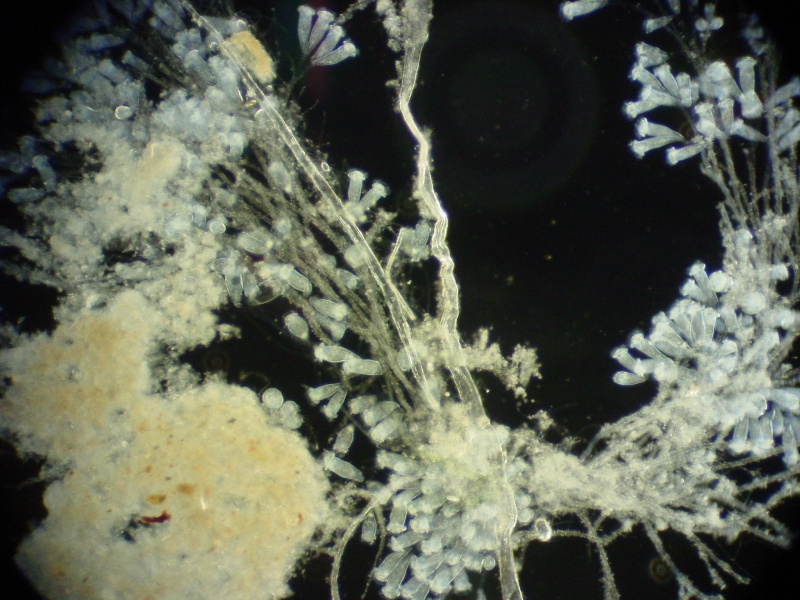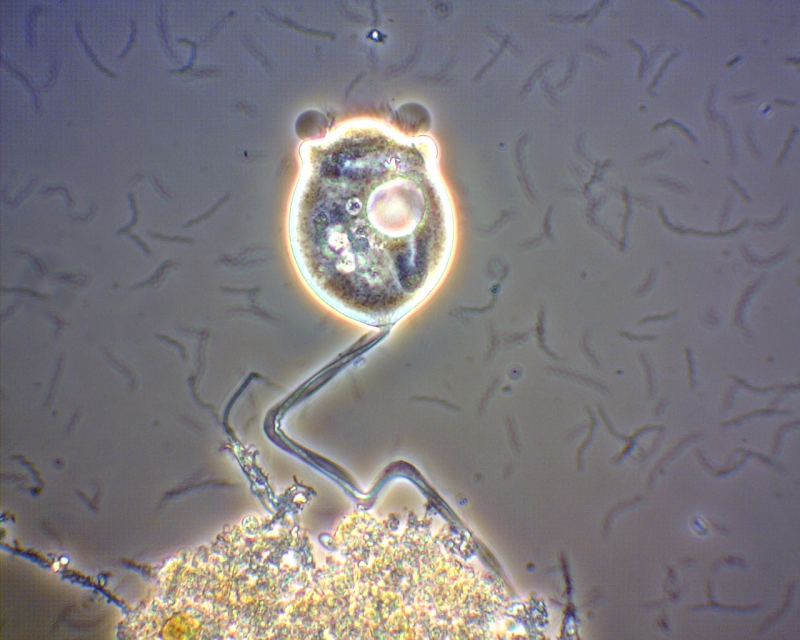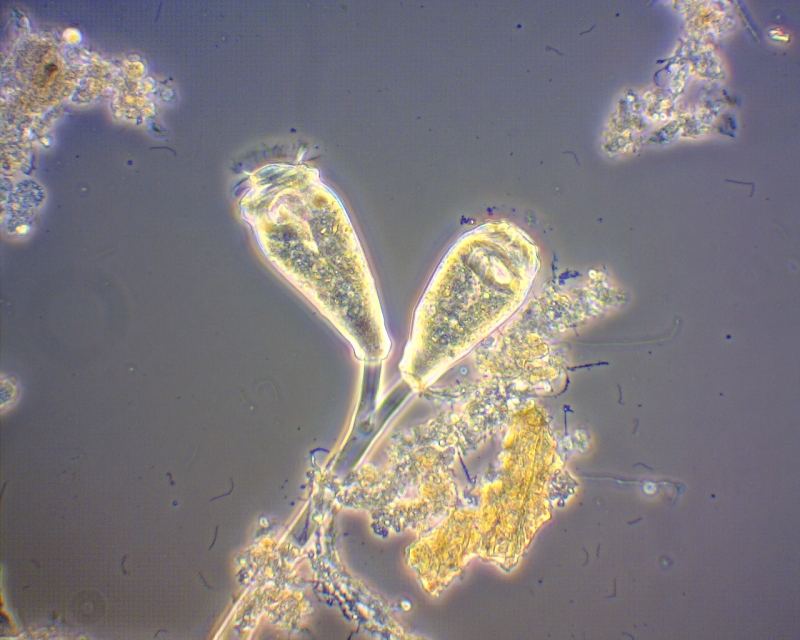Stalked Ciliates
Stalked ciliates can be seen in single organism form or can grow in colonies. Each “head” in a colony of stalked ciliates is considered one organism. Therefore, when counting higher life forms for maturity index calculations every organism is counted in the colony. Colonies can range from three to over three hundred organisms each. Stalked ciliates usually attach them-selves to a piece of floc or inert material but can occasionally be seen moving through the water, with or without the stalk. Centrifuging a sample for observation can break the stalk off. Each species resembles a tulip or tube shape with cilia (small hairs) around the opening. The cilia trap bacteria, which are used as a food source, by creating a current that moves the bacteria toward the opening. The stalk ciliate then contracts in a quick motion, which pushes the food into the body where it can be utilized.
Stalked ciliates usually indicate a stable, healthy system with a moderate to high maturity index. Because stalked ciliates attach to pieces of floc, they usually imply that the biomass (bacteria) is forming well structured floc that is essential to settling and good effluent quality. However, one stalked ciliate, Vorticella microstoma, is often indicative of high turbidity and poor effluent quality. This is because they consume single bacteria cells in open water which means dispersed bacteria are present and turbidities are elevated. But, this particular stalked ciliate has a very small mouth opening compared to other species which enables them to be identified fairly easily.
EBS Environmental
Stalked Ciliates Photos









